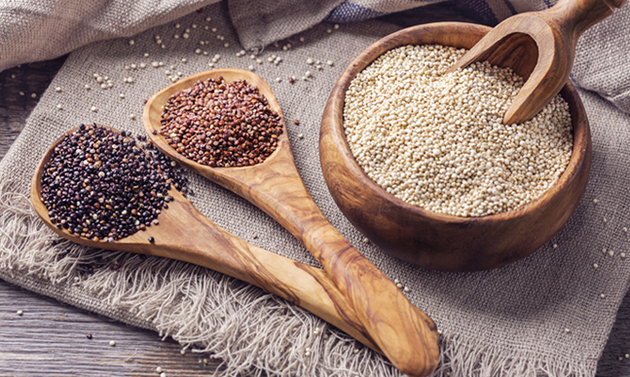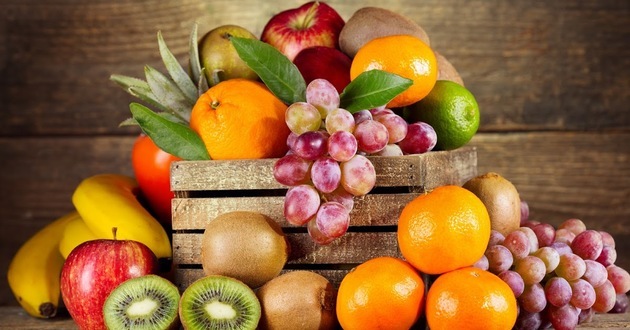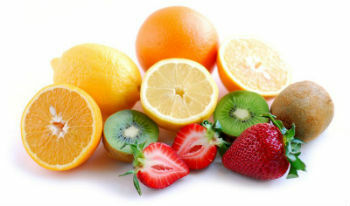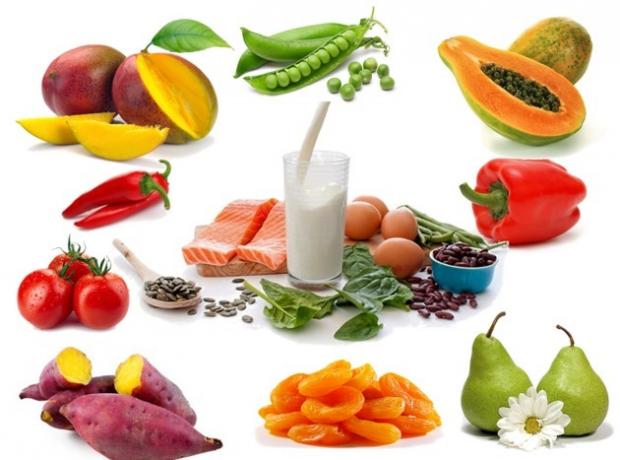Vegetable foods are those obtained from vegetable parts such as leaves, roots, stems and fruits.
Depending on its origin, food can be of three types:
- animal food: food from animals such as eggs, milk and meat.
- vegetable food: food from vegetables. Example: vegetables, vegetables and fruits.
- mineral food: represented by water and mineral salts.
Vegetables stand out for the possibility of being consumed in different ways, being fresh, cooked or roasted.
Examples of vegetable foods are fruits, vegetables, cereals and oils. They are sources of proteins, carbohydrates, fats, vitamins and minerals.
The result of a diet rich in vegetables is prevention against diseases and benefits for the functioning of the body. Therefore, it is recommended the daily consumption of vegetables, as they are part of a healthy diet.
Examples of plant foods
Check out a list with the name of 5 plant foods and discover the benefits of each of them:
1. Olive oil

Olive oil is a source of monounsaturated fats and Omega 3
. He is an ally in reducing the bad cholesterol, prevents clogging of arteries and acts to prevent cancer.In addition, olive oil also has an anti-inflammatory, anti-oxidant action and protects against osteoporosis, especially due to a substance that acts similarly to calcium.
Olive oil is obtained by processing ripe olives and the lower its acidity, the better its benefits.
In addition to food use, olive oil is also used in the production of cosmetics and medicines.
2. Quinoa

Quinoa is an excellent source of protein vegetable, in 100 g of the grain, 12 g are of proteins. It is cultivated in the Andes and is considered a sacred grain by the Inca peoples of South America.
It can be found in three versions: white, red and black, with the lighter the milder its flavor.
In quinoa we also find fibers, carbohydrates, lipids, water, B vitamins, phosphorus and calcium.
Quinoa is a food ally for people who practice physical activities frequently and want to increase muscle mass. It is also gluten free and can be consumed by people with gluten intolerance.
In addition, it helps in the proper functioning of the nervous system, immune system and healing processes.
It can be consumed raw or cooked, and can be included in salads, yogurts, juices, smoothies and with fruits.
You may also be interested in:
- Nutrients
- Healthy eating
- Food pyramid
3. Oat

Oat is a cereal obtained from grass Avena sativa, cultivated for a long time around the world thanks to its nutritional value.
It is a source of proteins, minerals, calcium, iron and vitamins. Due to its high fiber content, it helps in bowel regulation and weight loss diets, as it causes a feeling of satiety.
Among the benefits of oats for food are:
- Power supply
- Maintenance of glucose level
- Improved blood circulation
- Contributes to weight loss
- Cholesterol reduction
Oats can be found in the form of bran, flakes and flour, being consumed with juices, vitamins, fruits, pasta, breads and cakes.
Read too:
- Vitamin A
- Vitamin C
- Vitamin K
4. Soy

Soybeans belong to the botanical family Fabaceae, the same group as the beans. It is a source of potassium, iron, magnesium and zinc. In addition, due to its high protein value, it is widely consumed as a meat replacement option.
Soy production is an important economic activity in several countries. Brazil is one of the largest producers in the world.
It is considered a versatile food, making it possible to produce several options for consumption.
Among the benefits of soy consumption are:
- Cholesterol reduction
- Menopause Symptoms Relief
- Contributes to the health of bones and skin
Also read about:
- Protein rich foods
- bones of the human body
- World Food Day
- organic food
5. fruit

At fruits they are important for healthy eating, being sources of different types of vitamins, fiber, minerals and carbohydrates.
They are excellent allies in fighting diseases, preventing aging and regulating the body's functioning.
Brazil is a country that has a great diversity of fruit species, including many exotic fruits, which facilitates what its consumption by the population.
The World Health Organization (WHO) recommends the daily consumption of three to five servings of this food.
See also:
- food origin
- Foods of mineral origin
- Animal foods



